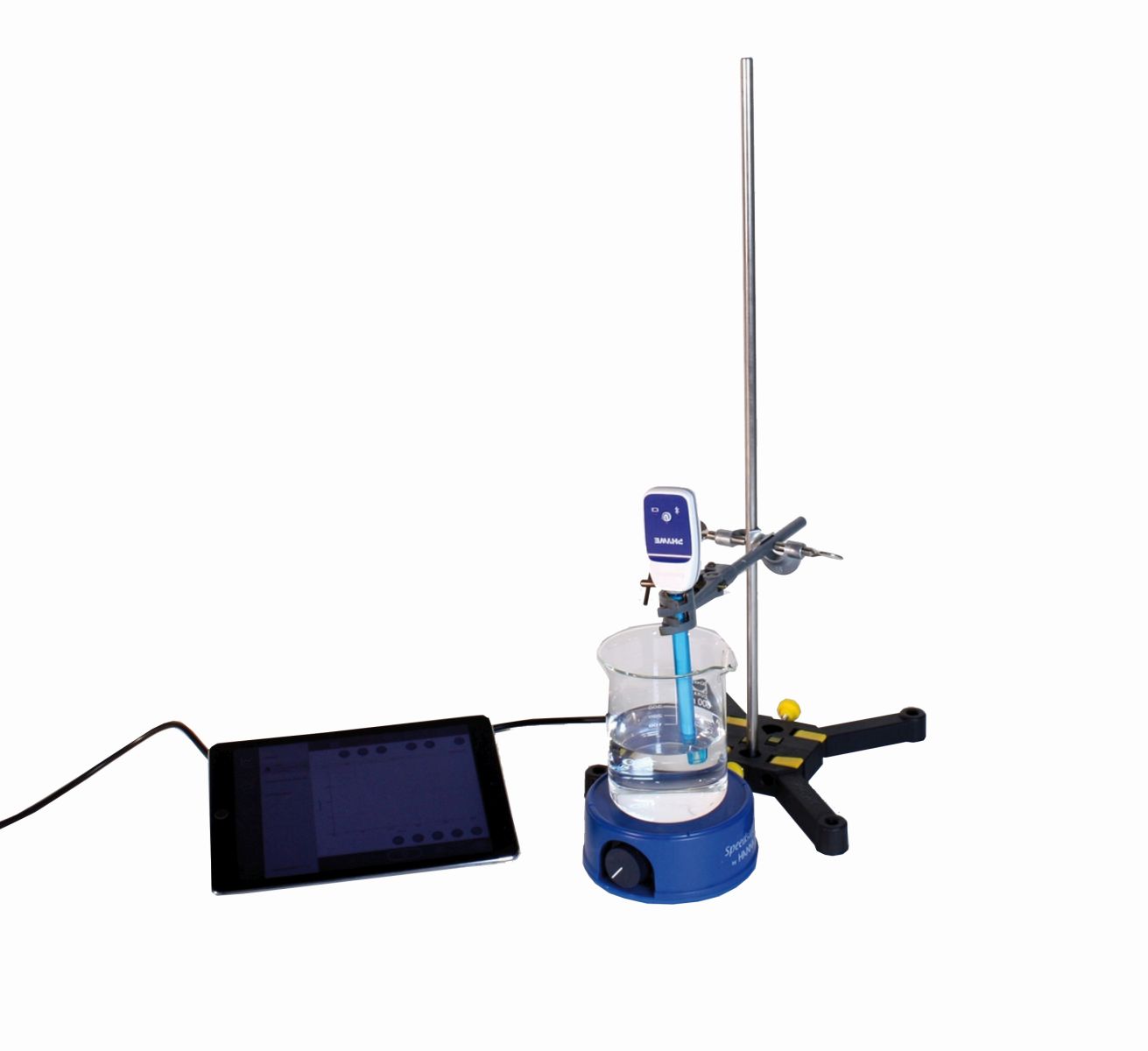Principle
The enzymatic hydrolysis of urea in aqueous solution yields carbon dioxide and ammonia. The ions of these compounds increase the conductivity of the solution. Conductivity measurements can be used to determine the rates of urea hydrolysis by the enzyme urease at different substrate concentrations. The Michaelis constant can be calculated from these values.
Benefits
- Especially understandable and didactically prepared description of the experiment (reference to everyday life etc.) including protocol questions
- Future-oriented teaching: Integration into digital science lessons with tablets or smartphones
- Increased motivation of students by using the intuitive measureAPP software
- Compact, easily transportable experimental set-up
- Suitable for demo experiments and for lab course experiments
- Flexible test execution thanks to wireless data transmission
Tasks
- Measurement of the change in conductivity due to urease activity in solutions with different urea concentrations and calculation of the Michael constant
Learning objectives
- Michaelis constant
- Enzymatic urea hydrolysis
- Conductivity measurement
- Soilstone principle
- Enzyme-substrate complex
- Lineweaver-Burk-Plot


